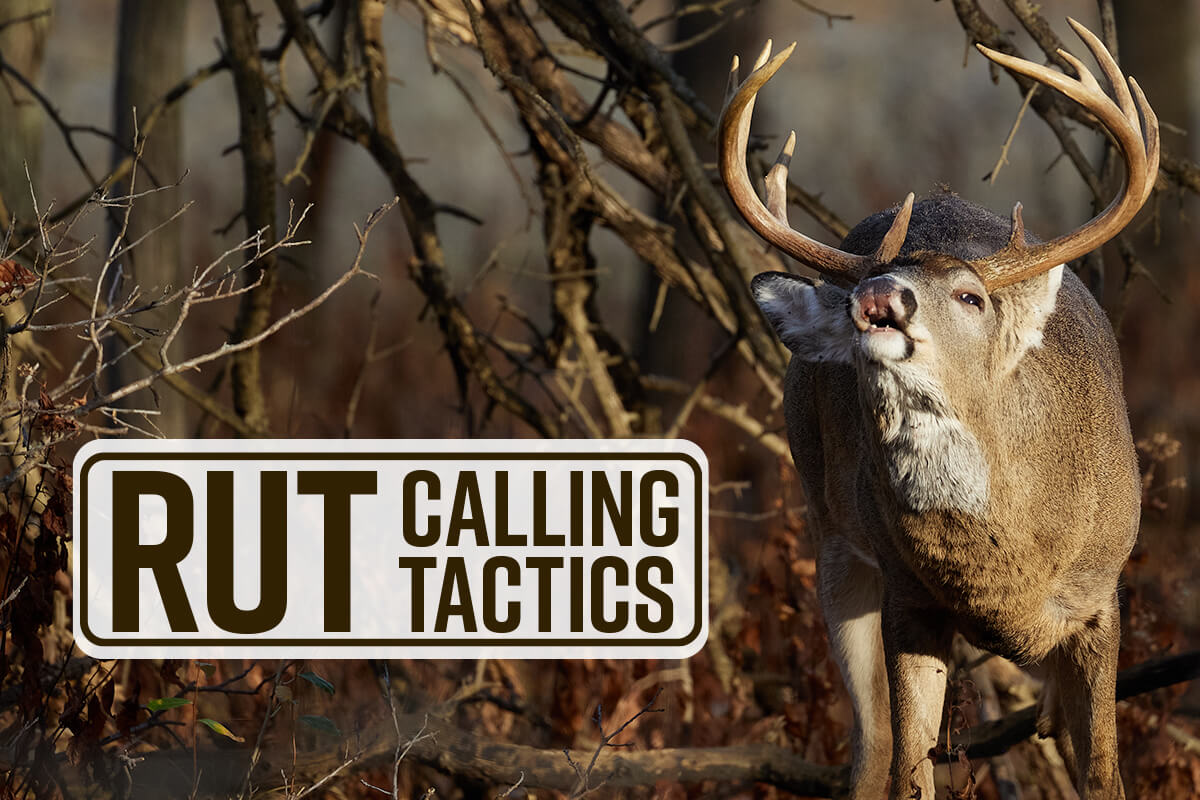
Be mindful of wind direction when calling during the pre-rut, as bucks tend to circle downwind before approaching a call. (Shutterstock image)
This article appears in the East edition of the November Game & Fish Magazine, now on sale. Learn how to subscribe
If you’re reading this, you are witnessing the power of attraction, and the next few moments will determine whether you read this article in its entirety or move on to something else.
The same concept applies to calling deer during the various phases of the rut. Even if you get a buck’s attention with a call, a number of variables ultimately affect whether it brings him in for a closer look.
While November can be an incredibly unpredictable month in the whitetail woods, the use of calls can be effective during the pre-, peak- and post-rut stages. But you need to understand what the deer are doing during each of these phases and offer up the right auditory lure.
PRE-RUT (Oct. 26 to Nov. 7)
Most deer have transitioned from their summer food source to their fall and winter food sources by now. Wooded areas that have good, healthy oak stands will become highly sought out by does and bucks alike. Knowing the locations of these areas can really help you home in on where to call, especially since does will often be on their feet in these areas.
Get your rattling antlers out because we are about to stir some things up. The bucks are now at an all-time high in testosterone levels and looking for that first doe in heat. Tensions are on the rise, and as daylight movement increases, bucks often move into territories where they really don’t belong. Get the biggest set of rattling antlers you have, smash them together every 30 minutes and be ready.
- BINGE WATCH all 6 episodes of Rut Crash Course
In areas with low deer densities or where there may not be many mature bucks, however, this may not be the best tactic. If this is the case where you hunt, keep things social through contact grunts and doe bleats. Continue to be mindful of wind direction and watch carefully—these bucks will work their way to your call from the downwind side.
Adding a buck decoy and facing the head in the direction from which you expect a buck to approach can really help close the distance. Try to be as scent-free as possible, and if you plan to use a deer scent, I suggest using buck urine rather than estrous. The key to this phase is imitating a buck on the move, working to be the first to breed.
Rut Crash Course: Rattle in Big Bucks
PEAK RUT (Nov. 8 to Nov. 20)
It’s time to put the grunt tube to work. The does are in estrus and the bucks are begging them to stop and let them breed. My go-to sequence for the peak rut is a trailing grunt. I do 8 to 15 short grunts followed by a long grunt every 15 to 20 minutes and remain vigilant. A buck passing by will often hear this and come in to try to get in on the action. Unlike in the other phases, I have found during the peak of the rut that bucks will come from all different directions regardless of the wind direction. They will often come into this grunting sequence almost immediately, rather than take a prolonged, cautious approach.
Very seldom do I use a bleat call, but have found during this phase that a bleat is sometimes the tool that brings a buck in close. Occasionally I will use a bleat call in a soft manner, but mostly only if I see a buck that is hung up and won’t commit. The best luck I’ve had is with grunting. When that doesn’t work, wait 20 minutes and grunt again.
Snort wheezes can be highly effective in this phase. Seldom have I called in a buck with a blind snort wheeze, but several times I’ve stopped bucks in their tracks. If you have a decoy, pairing it with the snort wheeze can be a deadly combo. A buck that hears the call will want to know what he’s getting himself into, so having something visual highly increases your odds of drawing him in, especially if he’s cruising or hung up outside of shooting range.
Rut Crash Course: 3 Deer Calling Strategies
POST-RUT (Nov. 21 to Dec. 12)
In areas where the deer herd is balanced, I’ll treat the post-rut like the pre-rut. The use of rattling antlers and soft grunts can really get a buck moving during this time. A few of my biggest and most mature bucks have been killed in late November and early December with calling. In 2017 I was able to lightly rattle in three separate bucks, which enticed two of them to fight under my stand. I eventually took the more mature of the two.
Although this isn’t common and was a unique experience, it led me to believe that just because the peak of the rut is over, breeding is not. Some does have gone unbred, bucks still have high levels of testosterone and deer are still communicating often.
In areas with lower deer densities or where the balance is heavily in favor of the does, I don’t do as much aggressive calling during this phase. Instead, I’ll opt for lighter contact grunts and bleats. Deer are still very vocal regardless of densities or sex ratios, but in areas where there are fewer bucks, fighting for does often isn’t necessary, so I tend to withhold the aggressive tactics.
The key to successful calling is to understand how and why deer communicate, create curiosity during certain times, and stay vigilant. Keep your focus, spot them before they see you and be ready, because calling deer during the rut can be both exciting and rewarding for those who are patient and persistent.













